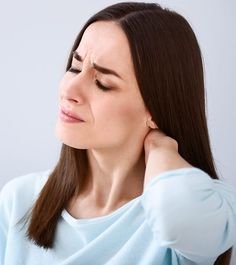The Healing Power of Music: Soothing the Soul, Easing the Pain
Discover effortless pain relief solutions! From natural remedies to cutting-edge therapies, find your path to comfort and wellness.

In a world often fraught with stress, anxiety, and pain, music stands as a timeless remedy. Its ability to heal, soothe, and uplift the soul has been acknowledged since ancient times. From the rhythmic beats of tribal drums to the symphonic melodies of classical compositions, music has woven itself into the fabric of human existence, offering solace and comfort in times of need. In this article, we explore the profound healing power of music, delving into its therapeutic effects on the mind, body, and spirit.
The Science Behind Music Therapy
Music therapy, a formalized approach to using music for healing purposes, has gained recognition and acceptance in modern healthcare practices. Numerous studies have demonstrated its efficacy in reducing stress, alleviating pain, and improving overall well-being. The mechanisms through which music exerts its therapeutic effects are multifaceted and complex.
One key aspect is the influence of music on the brain. When we listen to music, various regions of the brain are activated, including those responsible for emotion, memory, and motor control. Certain types of music can evoke specific emotional responses, triggering the release of neurotransmitters such as dopamine and serotonin, which are associated with pleasure and mood regulation.
Moreover, music has been found to synchronize brainwave activity, promoting relaxation and reducing anxiety levels. The rhythmic patterns and harmonic structures inherent in music have a profound impact on our physiological state, inducing a sense of calmness and tranquility.
Music as a Tool for Emotional Expression
Beyond its neurological effects, music serves as a powerful medium for emotional expression and catharsis. For centuries, individuals have turned to music to articulate feelings that are otherwise difficult to convey through words alone. Whether through heartfelt lyrics or instrumental compositions, music has the capacity to resonate with our innermost emotions, offering validation and comfort in times of distress.
In therapeutic settings, music is often used as a means of facilitating emotional release and processing traumatic experiences. Through guided listening sessions or improvisational techniques, individuals are encouraged to explore their feelings and confront unresolved issues in a safe and supportive environment.
The Healing Sounds of Nature
Nature has long been revered for its healing properties, and music inspired by natural elements holds a special resonance in promoting relaxation and inner harmony. The gentle rustle of leaves, the rhythmic ebb and flow of ocean waves, and the melodious chirping of birds—all find expression in ambient music designed to evoke a sense of serenity and connection with the natural world.
Research suggests that exposure to nature sounds can reduce stress levels and enhance mood, mimicking the restorative effects of spending time in natural environments. Incorporating nature-inspired music into daily routines, whether through listening to recordings or engaging in outdoor activities, can serve as a powerful antidote to the pressures of modern living.
Music in Pain Management
For individuals coping with chronic pain or undergoing medical procedures, music offers a non-invasive and cost-effective adjunct to traditional pain management strategies. By diverting attention away from discomfort and promoting relaxation, music can help mitigate the perception of pain and improve coping mechanisms.
Studies have shown that listening to music before, during, or after surgery can reduce anxiety levels and the need for analgesic medications. Similarly, patients undergoing chemotherapy or other invasive treatments report decreased pain intensity and improved quality of life when music is incorporated into their care plans.
The Therapeutic Potential of Rhythm and Movement
In addition to its auditory appeal, music possesses a inherent rhythmic quality that lends itself to movement and physical expression. From dancing to the beat of a drum to engaging in structured movement exercises, rhythmic activities can enhance coordination, motor skills, and overall physical well-being.
In rehabilitation settings, music therapy is often used to help individuals regain mobility and functional independence following injury or illness. By synchronizing movement with rhythmic stimuli, such as percussion instruments or recorded music, patients can improve gait patterns, balance, and range of motion, leading to enhanced recovery outcomes.
Music as a Bridge Across Cultures and Communities
Beyond its individual therapeutic benefits, music serves as a universal language that transcends cultural boundaries and fosters social cohesion. Whether through communal singing, collaborative music-making, or shared listening experiences, music has the power to bring people together and forge connections based on shared emotions and experiences.
In multicultural societies, music plays a vital role in preserving cultural heritage and promoting intercultural dialogue. By celebrating diversity and embracing musical traditions from around the world, communities can cultivate greater understanding and appreciation for one another, paving the way for mutual respect and harmony.
Conclusion
In conclusion, the healing power of music extends far beyond mere entertainment—it is a profound force for transformation and renewal. Whether used in clinical settings, personal therapy, or communal rituals, music has the ability to soothe the soul, ease pain, and uplift the human spirit. As we continue to explore the therapeutic potential of music, let us embrace its healing vibrations and harness its transformative energy for the betterment of ourselves and society as a whole.
What's Your Reaction?










![Blog Submission Sites 2024 [High DA]](https://blognow.co.in/uploads/images/202306/image_100x75_6494a03eaff5e.jpg)
![Article Submission Sites 2023 [High DA & PA]](https://blognow.co.in/uploads/images/202307/image_100x75_64c4181f17036.jpg)
![Classified Submission Sites 2023 [High DA & PR]](https://blognow.co.in/uploads/images/202306/image_100x75_649dcd5260808.jpg)




![Article Submission Sites 2023 [High DA & PA]](https://blognow.co.in/uploads/images/202307/image_750x415_64c4181f08ed5.jpg)
![Classified Submission Sites 2023 [High DA & PR]](https://blognow.co.in/uploads/images/202306/image_750x415_649dcd5247eeb.jpg)
![Blog Submission Sites 2024 [High DA]](https://blognow.co.in/uploads/images/202306/image_750x415_6494a03e96bfa.jpg)
